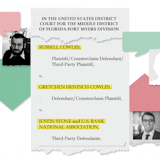It's clear Winona LaDuke does not appreciate the successful completion of the Line 3 pipeline ("Line 3 opponents can savor this defeat," Opinion Exchange, Oct. 10). Also clear: Some important facts about the project were misrepresented in her narrative.
If the Line 3 pipeline was not needed, Enbridge would not have undertaken a $9 billion private investment in a pipeline to replace aging and corroding infrastructure — a $4 billion investment in the U.S. portion of the pipeline alone. Despite LaDuke's arguments to the contrary, we need all forms of energy in order to meet global demand. Crude oil will remain an important part of the energy mix even as we transition to a lower carbon future.
LaDuke implies in her rhetoric that government leaders and the courts somehow failed to prevent Line 3 from being built. The truth is that our regulatory system worked as intended.
The project was reviewed extensively and approved repeatedly by the Minnesota Public Utilities Commission, Minnesota Pollution Control Agency, Minnesota Department of Natural Resources, the U.S. Army Corps of Engineers, the Bureau of Indian Affairs and the Fond du Lac Band of Lake Superior Chippewa (which has water quality authority along the pipeline route).
The open and transparent six-plus years review process in Minnesota included 70 public comment meetings, appellate review and reaffirmation of a 13,500-page environmental impact study, four separate reviews by administrative law judges and 320 route modifications in response to stakeholder input. LaDuke's organization, Honor the Earth, was a full participant in this process.
Thirty tribes took part in the project consultation process with the Army Corps of Engineers. The Line 3 Replacement Project included a first-of-its kind Tribal Cultural Resource Survey led by the Fond du Lac Band of Lake Superior Chippewa who managed review of the more than 330-mile route in Minnesota through the 1855, 1837, and 1863/1864 treaty areas. Fond du Lac employed tribal cultural experts who walked the full route identifying and recording significant cultural resources to be avoided.
As a result of this survey, 60 tribally significant cultural locations were identified and recommended for further avoidance, mitigation treatments or Tribal monitoring, all of which were adopted into project plans.
In terms of environmental justice, Enbridge has spent well over $300 million Line 3 project dollars specifically with tribal nations, citizens, communities and contractors.


